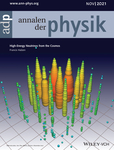Journal list menu
Export Citations
Download PDFs
Cover Picture
High-Energy Neutrinos from the Cosmos (Ann. Phys. 11/2021)
- First Published: 15 November 2021
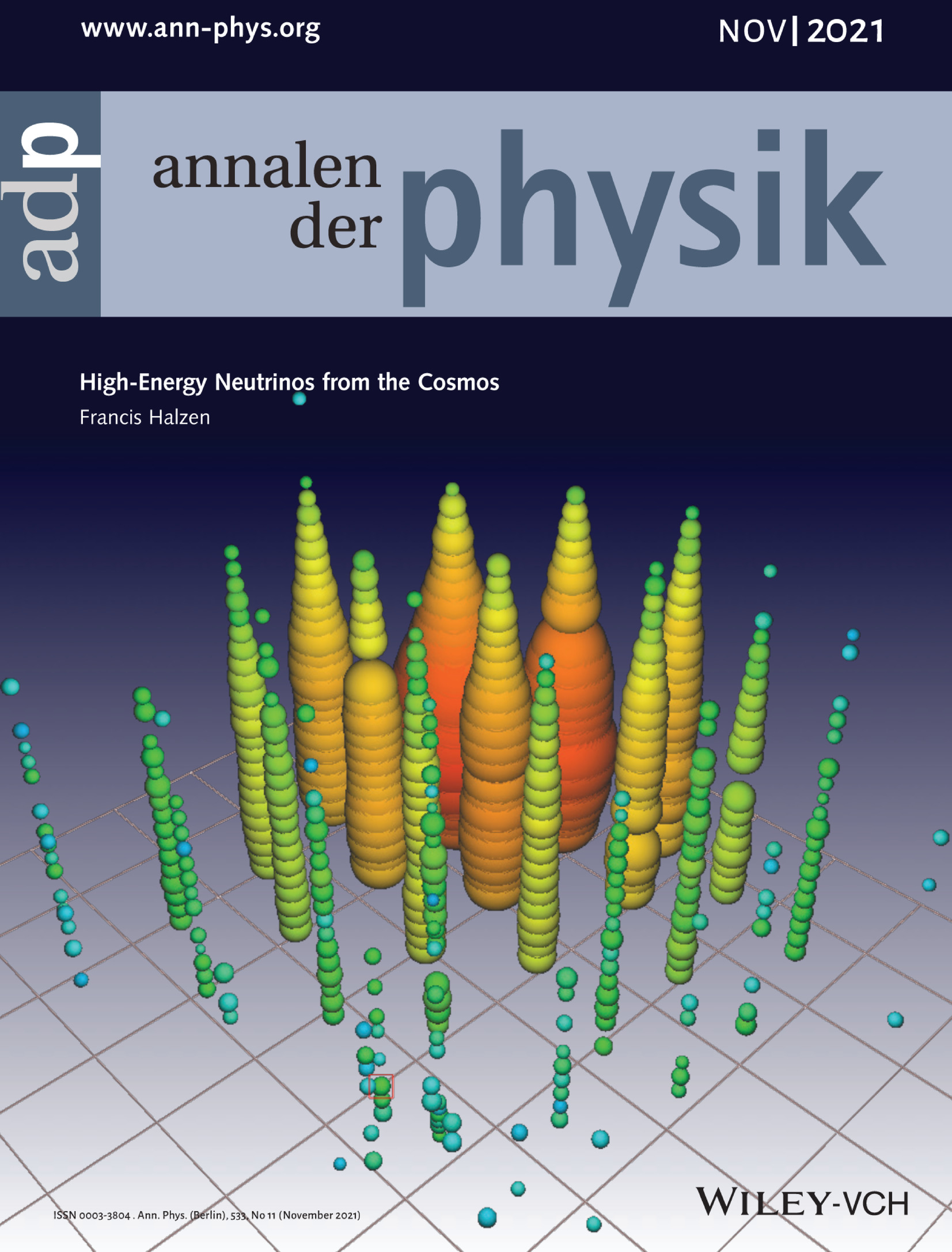
Neutrino Astronomy
The IceCube Neutrino Observatory is designed to observe the cosmos from deep within the South Pole ice. In article number 2100309, Francis Halzen reviews the results from IceCube's first decade of operations. The cover image illustrates the light pattern recorded by IceCube that is radiated by a particle shower created by the Glashow resonance. Colored dots represent light sensors that detect photons. Their color indicates arrival time, from red (early) to purple (late) following the rainbow, and their size reflects the number of photons detected.
Masthead
Reviews
Theoretical Analysis of the Radiation Properties of Some Major X-Ray Free Electron Lasers
- First Published: 16 September 2021
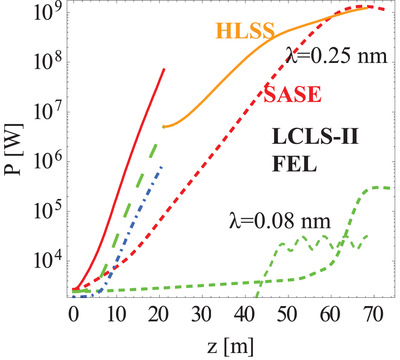
X-ray radiation from major operating and constructed free electron lasers (FELs) is theoretically studied. The effect of the undulator and beam parameters on the radiation properties is analyzed and compared for each FEL, using analytical solutions in terms of generalized Bessel functions. The possibility to use harmonics and their self-seed is explored.
High-Energy Neutrinos from the Cosmos
- First Published: 27 September 2021
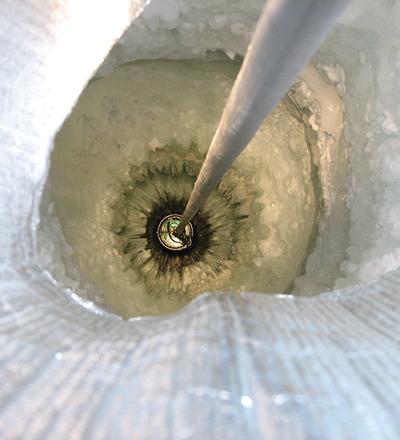
The IceCube Neutrino Observatory is the first detector of its kind, designed to observe the cosmos from deep within the South Pole ice. It consists of a cubic kilometer of instrumented transparent ice transformed into a Cherenkov detector. IceCube's first decade of operations has yielded breakthrough results, including the discovery of very high energy cosmic neutrinos.
Research Articles
Charge-Current Output in Plasma-Immersed Hydrogen Atom with Noncentral Interaction
- First Published: 27 August 2021

When a noncentrally interacting hydrogen atom under the influence of a spherical confinement is embedded in a plasma environment, its energy spectrum changes significantly. Orbital charge-currents and magnetizations are affected by changing the localization of energy levels. Significant effects of plasma shielding parameters, spherical confinement, and noncentral interaction on charge-currents and magnetizations are observed.
Manipulating Second Harmonic Generation in Higher-Order Topological Photonic Crystals
- First Published: 27 August 2021
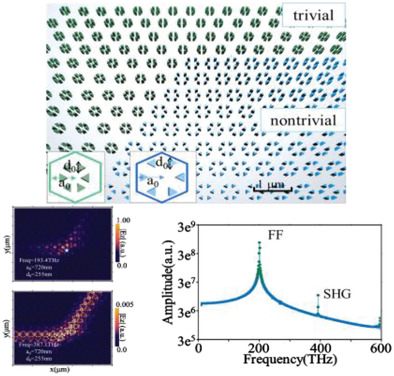
It is demonstrated that the high localization of photons at corner-states can significantly promote optical second harmonic generation, and additional edge states, which are immunity to defects and low transmission loss, are obtained. Meanwhile, by adjusting the structure, the edge states can be used as waveguides to make the second harmonic generation transmit robustly.
Quantum Coherence Regulated by Nanoparticles in a Whispering-Gallery-Mode Microresonator
- First Published: 26 August 2021
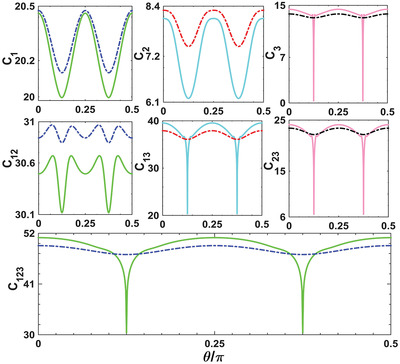
Quantum coherence is studied in a whispering-gallery-mode optical microresonator. It is shown that the dynamic control of quantum coherence/intercoherence can be implemented by operating the relative phase angle of the nanoparticles. A rather more exotic finding is that chiral quantum coherence can be achieved in the context of asymmetric backscattering.
Fermi Velocity Modulation Induced Low-Bias Negative Differential Resistance in Graphene Double Barrier Resonant Tunneling diode
- First Published: 15 September 2021
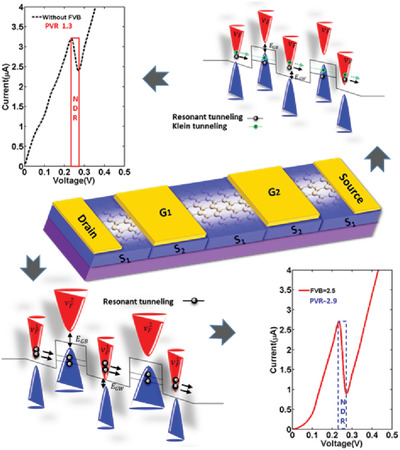
By using different substrates and metal gates, Fermi velocity is modulated in graphene well/barrier structure. In the case without Fermi velocity modulation (top), resonant tunneling accompanied with Klein tunneling while introduction of the two various Fermi velocity of and with proper ratio Fermi velocity barrier between well and barrier improves negative differential resistance performance of device via suppressing Klein tunneling (bottom).
Controllable Excitation of Surface Plasmon Polaritons in Graphene-Based Semiconductor Quantum Dot Waveguides
- First Published: 27 September 2021
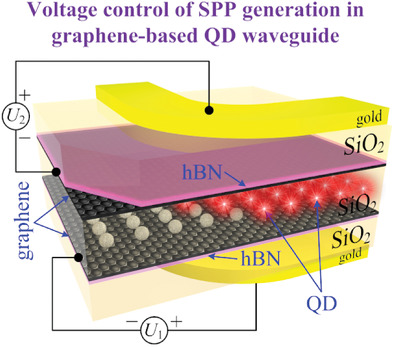
The voltage control of surface plasmon polaritons generation in a two-graphene sheets plasmonic waveguide loaded with an array of quantum dots excited by external radiation is considered. The different near-field patterns realized in such a waveguide depending on the quantum dots' ordering and an external voltage applied independently to each graphene sheet with additional gold electrodes are shown.
Manipulation of One-Way Gaussian Steering via Quantum Correlated Microwave Fields
- First Published: 24 September 2021
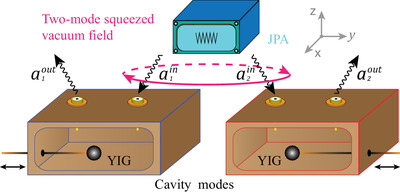
How to implement one-way steering between two long-distance YIG spheres in a cavity magnomechanical system is shown. The two spheres are separately placed inside two microwave cavities which are driven by a two-mode squeezed microwave field. It is shown that the steering directivity depends on populations of the two vibrational modes but barely affected by the dissipation of the system.
High-Performance Vanadium Diselenide Nanosheets for the Realization of Compact Pulsed Fiber Lasers
- First Published: 27 September 2021
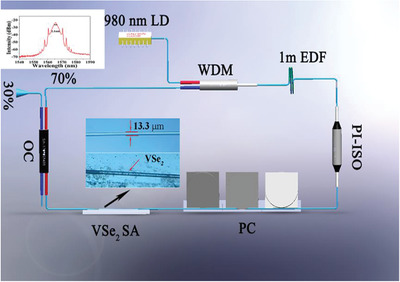
Vanadium diselenide (VSe2) nanosheet is a kind of transition metal dichalcogenide. It has excellent nonlinear optical characteristics in the near-infrared band. Ultrashort pulses can be obtained and dynamic evolution of the pulses is studied based on VSe2 nanosheet nonlinear photonics device. This work provides new inspiration for the application of VSe2 in the fields of nonlinear optics and ultrafast photonics.
Giant Nonlinear Circular Dichroism from High Q-Factor Asymmetric Lithium Niobate Metasurfaces
- First Published: 24 September 2021
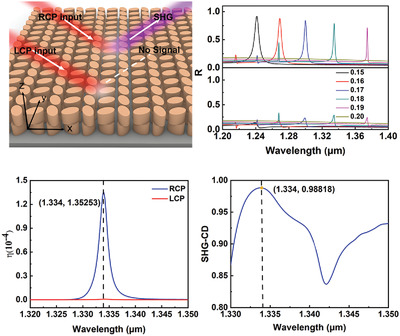
By combining bound states in the continuum (BICs) with chirality, a high conversion efficiency and strong second-harmonic circular dichroism (SHG-CD) can be achieved. The simulated results show that the SHG conversion efficiency can reach 1.35 × 10−2% for a peak-pump intensity of ≈5.3 GW cm−2 in the near-infrared, and the SHG-CD can reach 0.98 by introducing a two-layer structure.
Adiabatic Pumping in a Generalized Aubry–André Model Family with Mobility Edges
- First Published: 01 October 2021
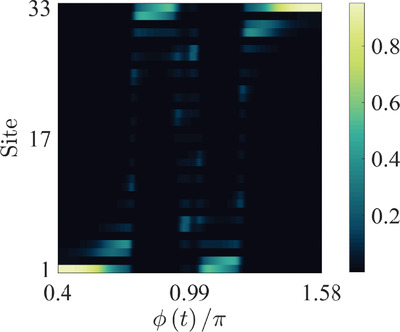
Mobility edges in a generalized Aubry–André model family can cause two adiabatic pumpings at different energies to have an opposite outcome, namely, compared to the paradigmatic Aubry–André model, one can persist with a more relaxed parametric condition but at the cost of the premature breakdown of the other.
Classical Analog of Quantum Light Cones in 1D and 2D Dipole Systems
- First Published: 04 October 2021
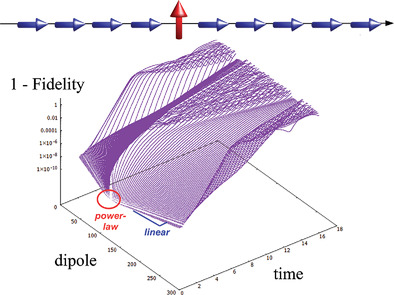
The light cones that appear in classical interacting dipoles are described. A non-linear light cone is obtained for very short initial times, followed by a complex time-evolution which suggests the onset of a linear cone. With the present treatment, it is shown that quantum spins behave very much like classical dipoles when considering long-range interactions between them.




